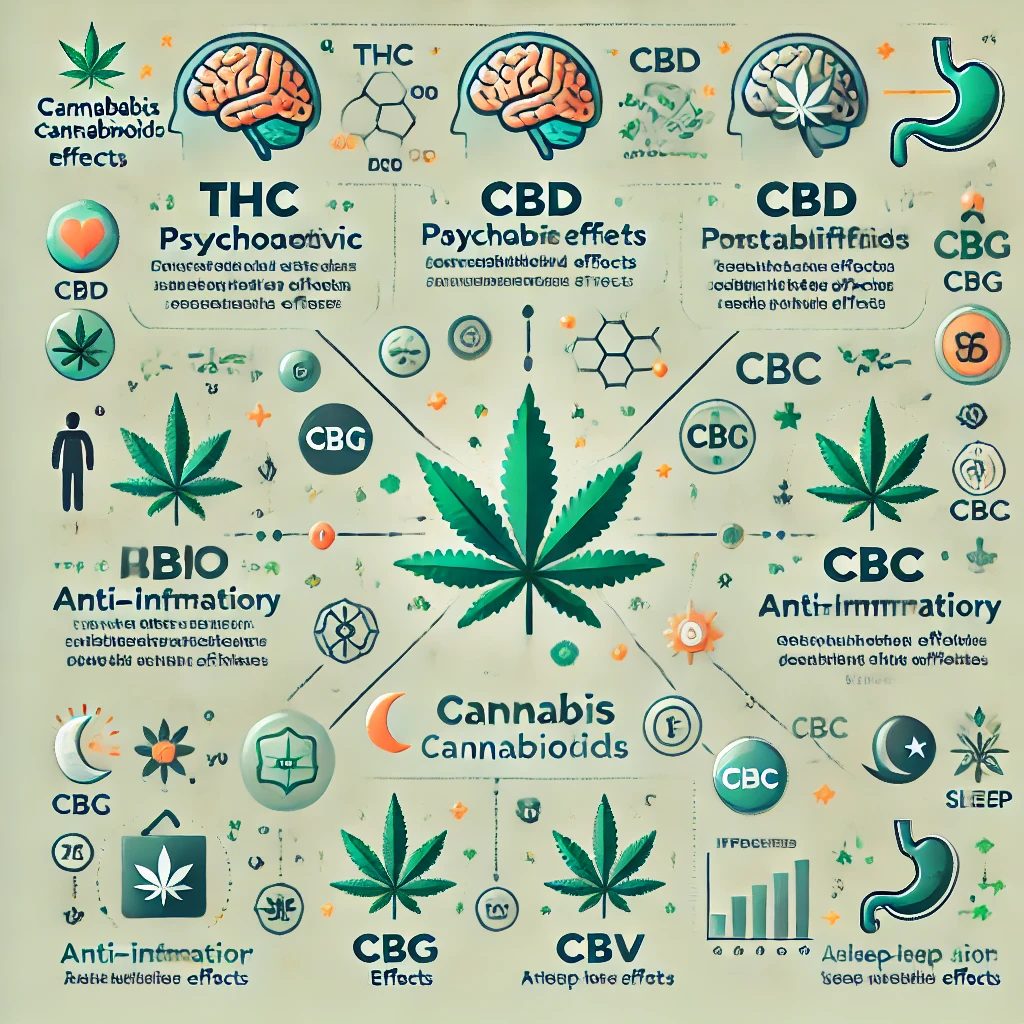
Understanding Cannabinoids: The Key Compounds in Cannabis and Their Effects
Share
Cannabis has been used for centuries, but it's only in recent years that we've started to understand the science behind its effects. At the heart of cannabis's impact on the human body are compounds known as cannabinoids. These naturally occurring chemicals interact with the endocannabinoid system in the body, leading to a variety of effects ranging from pain relief to altered states of consciousness. Here's a breakdown of the most important cannabinoids found in cannabis and what they do.
1. Tetrahydrocannabinol (THC)
What It Is: THC is the most well-known cannabinoid, primarily responsible for the psychoactive effects of cannabis. It's the compound that gets you "high."
Effects:
- Psychoactive: THC binds to CB1 receptors in the brain, leading to the classic effects of euphoria, altered sensory perception, and, in some cases, anxiety or paranoia.
- Pain Relief: THC can reduce pain, making it useful in treating chronic pain conditions.
- Appetite Stimulation: Often referred to as "the munchies," THC can increase appetite, which is beneficial for those undergoing treatments like chemotherapy.
- Sleep Aid: THC can induce sleepiness, making it a potential treatment for insomnia.
2. Cannabidiol (CBD)
What It Is: CBD is the second most common cannabinoid and is non-psychoactive, meaning it doesn't produce a "high." It has gained popularity for its therapeutic potential.
Effects:
- Anti-Inflammatory: CBD is known for its ability to reduce inflammation, making it useful for conditions like arthritis.
- Anxiety Relief: Unlike THC, CBD is often used to alleviate anxiety and stress.
- Neuroprotective: Emerging research suggests that CBD may protect the brain from neurodegenerative diseases like Alzheimer's and Parkinson's.
- Seizure Reduction: CBD is a well-known treatment for certain types of epilepsy, particularly in children.
3. Cannabinol (CBN)
What It Is: CBN is a mildly psychoactive cannabinoid that is created as THC degrades over time. It’s often found in older cannabis.
Effects:
- Sedative: CBN is known for its sedative effects and is sometimes referred to as the "sleep cannabinoid."
- Pain Relief: Like THC, CBN has analgesic properties, though it's less potent.
- Appetite Stimulation: CBN can also increase appetite, though it’s less effective than THC in this regard.
4. Cannabigerol (CBG)
What It Is: CBG is considered the “mother” of all cannabinoids because other cannabinoids are synthesized from its acidic form. It is non-psychoactive.
Effects:
- Antibacterial: CBG has been found to have strong antibacterial properties, making it a potential treatment for resistant bacterial infections.
- Glaucoma Relief: CBG is thought to reduce intraocular pressure, making it potentially beneficial for glaucoma patients.
- Anti-inflammatory: Like CBD, CBG can reduce inflammation and is being studied for conditions like inflammatory bowel disease.
5. Cannabichromene (CBC)
What It Is: CBC is a non-psychoactive cannabinoid that is less studied but has shown promising therapeutic potential.
Effects:
- Mood Elevation: CBC is believed to contribute to the overall mood-elevating properties of cannabis, though more research is needed.
- Pain Relief: CBC has analgesic properties and may work synergistically with THC and CBD to reduce pain.
- Anti-Inflammatory: Like other cannabinoids, CBC also has anti-inflammatory effects.
6. Tetrahydrocannabivarin (THCV)
What It Is: THCV is a minor cannabinoid that has gained attention for its unique effects, particularly its ability to act as an appetite suppressant.
Effects:
- Appetite Suppressant: Unlike THC, THCV can reduce appetite, which could make it useful for weight loss.
- Energy Boost: THCV is often described as a more energetic, stimulating compound, making it a potential option for those needing a mental or physical boost.
- Anticonvulsant: Early research suggests that THCV may help in controlling seizures.
The Entourage Effect
One of the most fascinating aspects of cannabinoids is how they work together, a phenomenon known as the "entourage effect." This term refers to the synergistic effects of different cannabinoids, terpenes, and other compounds found in cannabis. The idea is that these compounds may enhance each other’s effects when used together, providing a more balanced and therapeutic experience than any single cannabinoid could on its own.
For example, while THC alone may cause anxiety in some users, when combined with CBD, this effect is often mitigated, resulting in a more pleasant experience. Similarly, cannabinoids like CBG or CBN may enhance the pain-relieving effects of THC or CBD.
Conclusion
Cannabinoids are the key to understanding how cannabis affects the body and mind. While THC and CBD are the most well-known, other cannabinoids like CBN, CBG, CBC, and THCV also play significant roles in the plant's effects. As research continues, we are likely to discover even more about how these compounds can be used for therapeutic purposes, potentially leading to new treatments for a wide range of conditions.
Whether you're a medical cannabis patient or a recreational user, understanding these cannabinoids can help you make more informed choices about the products you use and how they might affect you.
